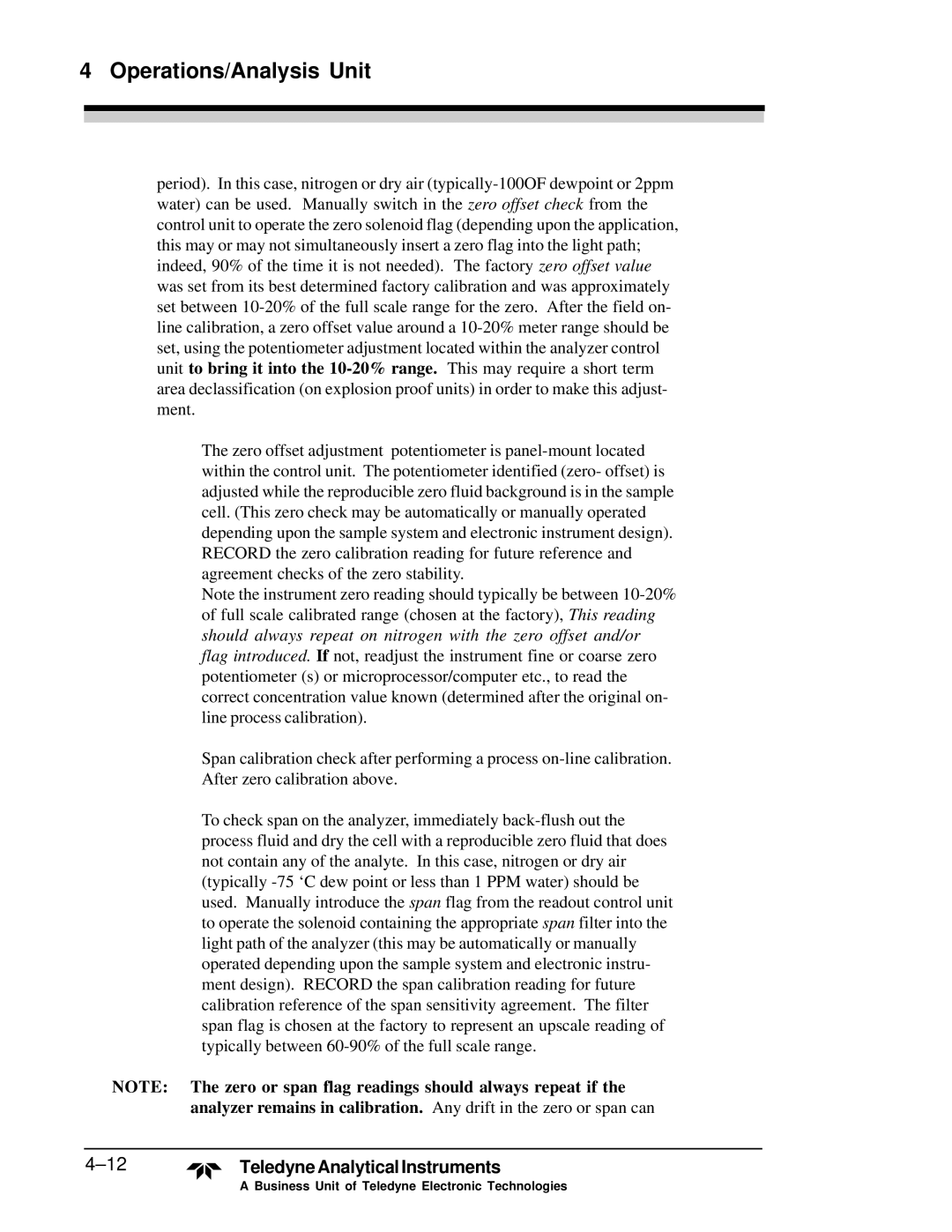4 Operations/Analysis Unit
period). In this case, nitrogen or dry air (typically-100OF dewpoint or 2ppm water) can be used. Manually switch in the zero offset check from the control unit to operate the zero solenoid flag (depending upon the application, this may or may not simultaneously insert a zero flag into the light path; indeed, 90% of the time it is not needed). The factory zero offset value was set from its best determined factory calibration and was approximately set between 10-20% of the full scale range for the zero. After the field on- line calibration, a zero offset value around a 10-20% meter range should be set, using the potentiometer adjustment located within the analyzer control unit to bring it into the 10-20% range. This may require a short term area declassification (on explosion proof units) in order to make this adjust- ment.
The zero offset adjustment potentiometer is panel-mount located within the control unit. The potentiometer identified (zero- offset) is adjusted while the reproducible zero fluid background is in the sample cell. (This zero check may be automatically or manually operated depending upon the sample system and electronic instrument design). RECORD the zero calibration reading for future reference and agreement checks of the zero stability.
Note the instrument zero reading should typically be between 10-20% of full scale calibrated range (chosen at the factory), This reading should always repeat on nitrogen with the zero offset and/or flag introduced. If not, readjust the instrument fine or coarse zero potentiometer (s) or microprocessor/computer etc., to read the correct concentration value known (determined after the original on- line process calibration).
Span calibration check after performing a process on-line calibration. After zero calibration above.
To check span on the analyzer, immediately back-flush out the process fluid and dry the cell with a reproducible zero fluid that does not contain any of the analyte. In this case, nitrogen or dry air (typically -75 ‘C dew point or less than 1 PPM water) should be used. Manually introduce the span flag from the readout control unit to operate the solenoid containing the appropriate span filter into the light path of the analyzer (this may be automatically or manually operated depending upon the sample system and electronic instru- ment design). RECORD the span calibration reading for future calibration reference of the span sensitivity agreement. The filter span flag is chosen at the factory to represent an upscale reading of typically between 60-90% of the full scale range.
NOTE: The zero or span flag readings should always repeat if the analyzer remains in calibration. Any drift in the zero or span can
4–12
 TeledyneAnalyticalInstruments
TeledyneAnalyticalInstruments
A Business Unit of Teledyne Electronic Technologies

![]()
![]() TeledyneAnalyticalInstruments
TeledyneAnalyticalInstruments